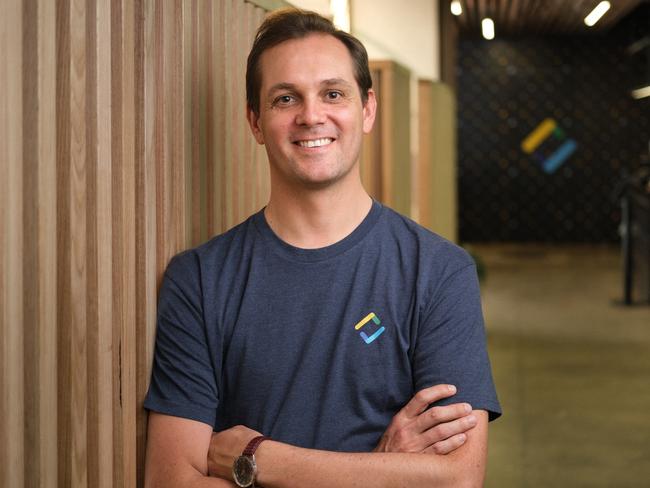How workers are changing their eating, cleaning and travelling habits amid COVID-19
Has the coronavirus pandemic got you driving to work, bringing a packed lunch and setting up your own little cleaning station at your desk? If so, you are not alone.
Careers
Don't miss out on the headlines from Careers. Followed categories will be added to My News.
Packed lunches, personal cleaning stations and fighting for car parks may become the new normal at work as Australians pledge to change their habits amid the coronavirus pandemic.
Research from Dynata reveals just 13 per cent of the 1025 workers surveyed in June plan to start wearing a face mask in the workplace, but 37 per cent will pack their own lunch to avoid food handled by others, 34 per cent will bring their own cleaning products and hand sanitiser, and 27 per cent will drive to work more often to reduce their use of public transport.
SafetyCulture chief operating officer Alistair Venn says safety is now seen as a major factor in almost every industry, not just traditionally high-risk sectors such as mining or manufacturing.

His best advice for safely returning to the workplace is for workers to formulate a routine.
“Conduct a certain process in the same way every time so you don’t introduce new risks,” he says.
“While typically touching a door handle wouldn’t have been considered a dangerous operation, just have a mental check of, ‘If I touch a door handle, is there hand sanitiser close by and how do I remind myself to use that immediately after?’.
“If a door opens inward, you can often open it by bumping with your hip or shoulder – you can almost navigate without the need to touch door handles.”
Venn says it can be helpful to create a checklist so workers are able to mitigate risks without having to do too much thinking.
“If you are tired or not concentrating, it’s hard to remember so follow a checklist,” Venn says.
“Whether that’s a mental checklist or writing on a piece of paper or in an app like iAuditor, it makes sure you cover off those risks.”
Workers can use something as simple as signage to their advantage, too.
“Put a big sign on the door of the meeting room saying the maximum capacity,” he says.
“Everyone remembers it used to have six chairs (for example) but use a big visual reminder so when people get into the daily swing of things they remember there is only three people allowed now and they shouldn’t drag more chairs in.”

Depending on the industry, workers may also be able to negotiate their work hours and where they conduct their business.
Venn says many workers do not need to be in the office every single day.
“You find in every sector there is someone desperately wanting to come back to the office and others saying they are really uncomfortable (about being exposed to the coronavirus), so it’s about having the right situation for every individual,” he says.
Meanwhile, staggered start times can allow people to avoid travelling in peak hours and therefore avoid the most crowded public transport.
Venn says workers may feel more confident in their return to the workplace if they wear a face mask on public transport, even in areas where masks are not mandatory.

A NEW WAY TO WORK
AbbVie Australia head of corporate communications Kate Richards has returned to her office since the COVID-19 outbreak but does things a little differently now.
“I used to drive in the majority of the time anyway, but I always drive in now rather than using public transport,” she says.
“We used to arrive at the office and choose a desk for that day, now we have allocated desks. “The first thing I do when I get into the office is wipe down the entire work station.”
Richards, who is responsible for “all things internal and external communications” at the biopharmaceutical company, also takes her own crockery, knives and forks and water bottle and doesn’t use any utensils in the office.
“For meetings, we might actually have only two people in the meeting room then Zoom in two other people who are in the office but in a different meeting room,” she says.
Richards also works from home more often since the COVID-19 outbreak.
“We have always had the flexibility to work from home,“ she says.
“Flexibility is one of the reasons (why AbbVie was awarded second position on Great Places to Work Australia’s 2020 Best Places to Work list in the 100-999 employee category).
“It has meant I can be a mother with two small children and still have a role I am satisfied with and career development opportunities.
“Now we have the ability to go in week on/week off but I am going in based on activity, not based on the day.
“On average, I go in two days a fortnight.”


